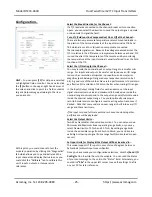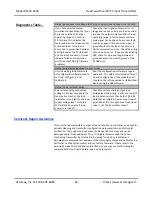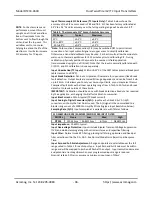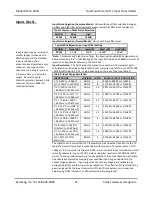
Model DT233-0600
Dual Two-Wire mV/TC Input Transmitters
Acromag, Inc. Tel: 248-295-0880
- 31 -
http://www.acromag.com
- 31 -
https://www.acromag.com
Diagnostics Table
…
POSSIBLE CAUSE
POSSIBLE FIX
Cannot Calibrate Input
Channel…
Are inputs wired properly?
Check that the input sensor is wired to the
correct ± input terminals in the correct
polarity.
Are you wired to the correct input
terminals for your channel?
TB1 and TB3 correspond to isolated
channels 1 and 2 respectively.
Cannot Calibrate the Output or Cannot Test the Unit…
Loop power ON to the unit?
The unit receives power from both USB
(when connected), and the output loop
power supplies. While you can configure a
unit over USB without loop power applied, a
loop power connection is required to test
operation or calibrate the unit.
Unit drives a low current, but fails to drive higher output current...
Loop supply voltage is too low to
support current into the loop load
or the loop load resistance is too
large for the current level. Does
the output fault LED blink at the
higher current?
Check power voltage level. Ideally, make
sure it is at least 7V plus 0.024*Rload. If
transmit distance is especially long, then it
must have added voltage to support the IR
drop in the wire. Ideally, the voltage should
also have ample overhead to at least drive
the load to 22mA.
Cannot Measure Input Temperature or voltage
…
Your input may be wired to the
wrong terminal.
On this model, while facing the input side of
the module, the left-most terminal is the
positive input of TB1 (channel 1) and TB3
(channel 2) and the center terminal is signal
return. The third (right-most) is not
connected.
For input step, output appears to make 2 steps to reach its final value…
For a step change in an input, the
input A/D typically needs two
input samples to ramp up to its
final level.
When you step the input signal, it takes two
samples for the A/D to ramp up to its final
value, and this is evident when using a
scope to examine the output transition in
response to a step change at the input,
which appears to make two steps to arrive
at its final level.













































